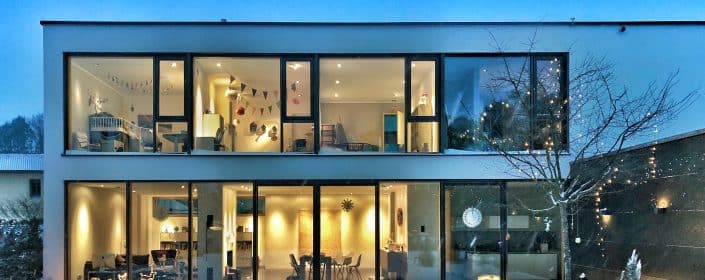Upgrades Tips and Ideas that Won’t Break The Bank
There’s a common misconception that making a home energy efficient requires a huge investment of both time and money. In reality, gradually making a few small changes to your home can do wonders for improving your home’s energy efficiency.
Here are some of the best ways you can upgrade your home to make it more energy efficient and improve your comfort year-round.
Get A Home Inspection
A licensed home inspector can see where your home is losing the most heat by using a thermal imaging camera. With this camera, the inspector can measure the difference in temperature throughout your home, complete an assessment, and make recommendations for ways to reduce heat loss in problem areas and improve your home’s seal.
Check Attic Insulation
Poorly-insulated attics are a major cause of heat loss in homes. To ensure your attic is well-insulated, hire a professional to install at least one inch of closed-cell spray foam insulation in your attic. Also, be sure to seal any window and door frames that may be contributing to heat loss.
Switch to LEDs
Switch to LED bulbs for a longer-lasting, more energy-efficient lighting option. You can start with replacing the most frequently used lights in your home, and then gradually switch the other lights.
There are plenty of LED lights available to suit various home lighting needs, such as dimmable, chandelier, and outdoor bulbs.
Install Programmable Thermostats
Programmable thermostats are smart home products that help you save on energy costs when you’re not home. You can schedule these thermostats to adjust your home’s temperature based on the time of day.
You can also use new thermostats with your smartphone. So if you forget to turn the heat down when you leave for the day, or if you want to adjust the temperature so your home is comfortable when you arrive, you can do so from wherever you and your smartphone are located.
Replace Old Toilets
Old toilets waste plenty of water because they use at least 16 to 20 litres per flush. But new low-flow toilets use a fraction of that amount, from around six litres per flush down to three litres per flush for ultra-low-flow toilets.
Upgrading to new low-flow toilets, you can save a significant amount of water, which is great for the environment and your water bills.
Replace Old Filters
Old furnace filters that are dirty and clogged will make your furnace work harder to heat your home, costing you more in heating bills, and ultimately reducing the lifespan of your furnace.
So replace your furnace filters regularly, about once a month in winter, and every three months for the rest of the year. A clean furnace filter will help keep the fan, heating coil, blower, and ducts clean and working efficiently.
Net Zero Homes
Net Zero homes are 80% more energy-efficient than the average new home. Each part of Net Zero homes works in tandem to prevent drafts and keep the home temperature consistent. So if you’re ever in the market for a new home, contact a Net Zero builder to discuss an energy-efficient home design.
Examine For Leakage and Drafts
Homes lose about 30% of their heat to air leakage from windows and doors, so it’s important to inspect your windows and doors for signs of air leakage, such as feeling for drafts. Also, look for weathered caulking and replace with rubberized caulking, which is more flexible and will last longer.
Seal Leaks
If your windows are in good condition, air leaks can usually be fixed by sealing air leaks, investing in insulation, and repairing windows. Replacing caulking and weather-stripping will make a noticeable difference. Use low-expansion foam for weather sealing and insulation for windows, doors, cracks, and gaps.
Install Storm Windows
You may also benefit from installing low-E storm windows to boost your home’s energy efficiency without replacing your windows. Low-E coatings reduce conduction and radiation heat loss. These coatings can increase energy savings by 10 to 15 percent more than standard storm windows without Low-E coatings.
Install Energy-Efficient Windows
If your windows are outdated, upgrading to energy-efficient windows will help insulate your home and keep your indoor temperature comfortable year-round. Energy-efficient windows use different glazes to keep the weather out of your home. These windows prevent hot and cold air leaks. And they also block sunlight from overheating your home and fading your interior furnishings.
These glazing options include double-clear, double-tint, and low-E coatings. And they can also have a solar-resistant film within the casing to further reduce heat transfer.
Double-glazed windows have two panes of glass on a super spacer. This glass has Low-E coatings on both the outside and inside panes to reflect heat into the home in winter and away from the home in summer.
The space between the two panes is filled with argon gas for enhanced insulation. Argon helps improve the thermal performance of glass. Triple-glazed windows are also available with the same types of coatings, spacers, and insulating gas.
A window’s frame also affects how much heat is lost from a home:
[su_list icon=”icon: chevron-right” icon_color=”#EC3826″]
- Vinyl and high-quality window frames reduce heat transfer and leaks.
- Metal window frames with thermal breaks to split the interior and exterior components, joining them with a less conductive material to reduce heat transfer.
- Non-metal frames made from vinyl, fibreglass, or composite materials, reduce the amount of dead space in the frame, which reduces heat transfer.
[/su_list]
Finally, window treatments, such as thick curtains can help reduce air drafts year-round and keep the hot, damaging sunlight out in summer.
While replacing your windows with energy-efficient windows presents a larger upfront cost than these other tips, the investment pays off. Energy Star windows will significantly reduce your home’s energy consumption and heating and cooling costs, especially when combined with these other upgrades for improving your home’s energy efficiency.


